“Wilderness is not a luxury but a necessity of the human spirit, and as vital to our lives as water and good bread.” – Edward Abbey
The Wild & Scenic Chetco River flows through the heart of the Kalmiopsis Wilderness. It’s one of the most rugged and yet fragile wild areas I’ve ever experienced.
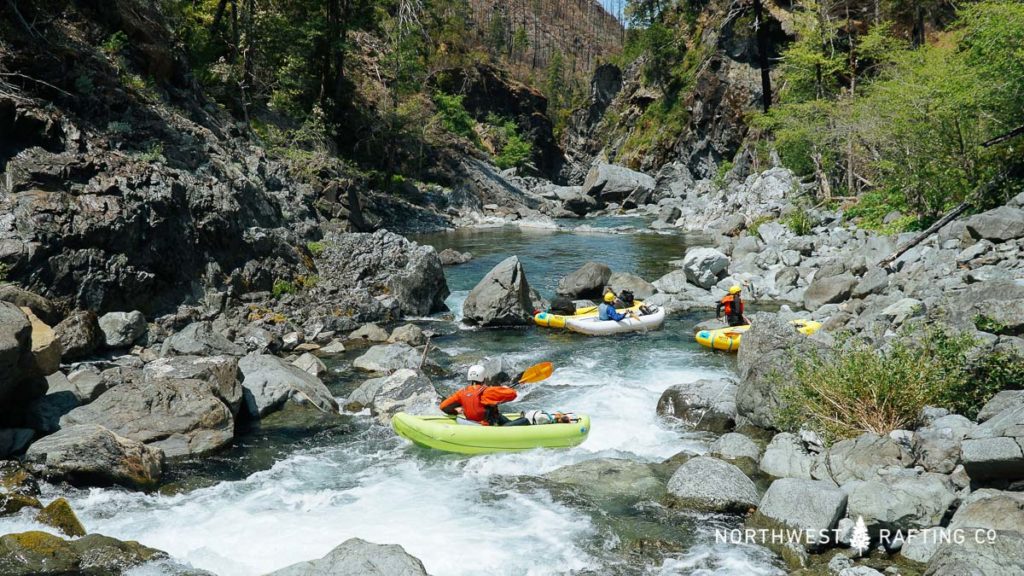 The Chetco River flows through the heart of the Kalmiopsis Wilderness
The Chetco River flows through the heart of the Kalmiopsis Wilderness
Its fragility lies in the fact that it’s in a state of natural recovery from the 2002 Biscuit Fire and that its refugia for rare plants, wild salmon and steelhead and some of the most beautiful clear waters around. What may seem like barren rocky ground is a unique geology and home to numerous rare plants.
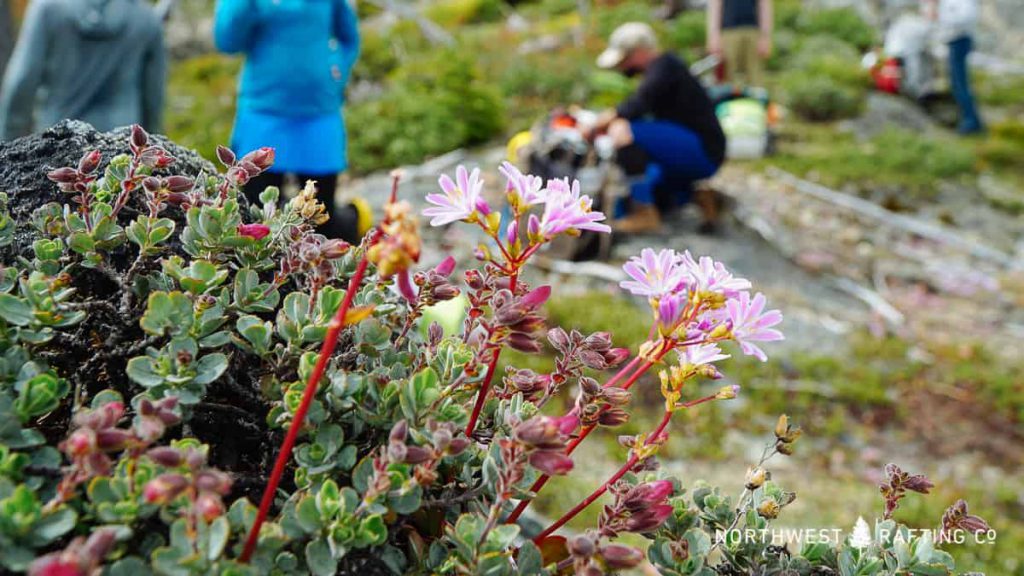 Lee’s Lewisia
Lee’s Lewisia
Please respect the Kalmiopsis Wilderness.
As you plan your trip there are two VERY important things to consider.
1. The Chetco River flows through harsh and rugged country. Please take the remoteness and steep terrain seriously.
2. You will be entering a very delicate ecosystem that is especially vulnerable since the Biscuit Fire raged through the Kalmiopsis Wilderness in 2002. Please respect the ecosystem and be sure you are not introducing an invasive species to the Kalmiopsis.
Getting There
“It’s not the destination, it’s the journey”
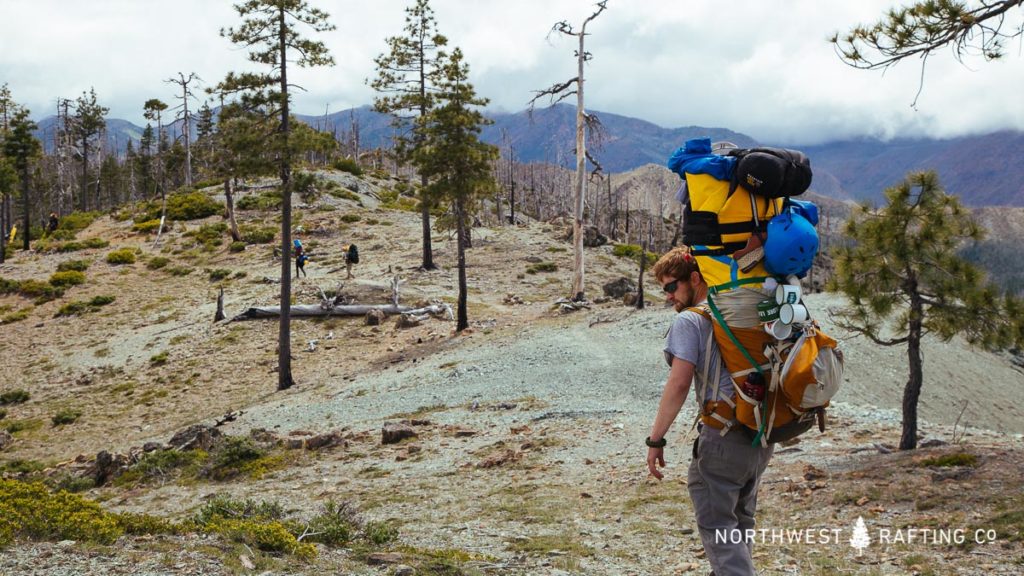 Hiking into the Chetco River
Hiking into the Chetco River
If you’re looking to run the Chetco River, you’ll find that getting to the river is the biggest challenge and part of the experience. The 2002 Biscuit Fire has left burnt trees across trails, and more burnt trees will continue to fall across the access routes.
You have 2 main options:
1. Chetco Pass to Slide Creek: Drive the 4wd road from McCaleb Ranch up to Chetco Pass and start hiking from there. The POC (Port Orford Cedar) Gate opens June 1st so you’ll need to wait until then if you want to make the drive. This is a true 4×4 road – Subarus won’t make it!
The hike from Chetco Pass to Slide Creek is about 4 miles and all downhill.
2. Babyfoot Lake to Carter Creek: Hike from the Babyfoot Lakes Trailhead to Carter Creek. This is a 9-mile hike that starts at 4200 feet, rises to 4800 feet, and then drops to 1400 feet where it meets the Chetco River at the Carter Creek Confluence. This route is regularly cleared by the Siskiyou Mountain Club which is nice, especially when carrying a load.
Hiking gear 9 miles into Carter Creek is no easy task. Be aware that this is designated wilderness, so no bikes, wheelbarrows, or wheels of any kind can be used.
Some groups have hired packer Mike Pierce (clrh20@hughes.net or 541-660-0761) to pack their gear in with horses. As mentioned earlier the ecosystem is very delicate and Mike is careful to be respectful of the backcountry by using the right feed that will not leave seeds of invasive species in the manure. Please note that the delicate serpentine ecosystem is not a good place for horses so if you hike your own gear in, you’re likely to get bonus wilderness/river karma.
Campsites
Most of the campsites along the Chetco River are pretty small, but if you plan on sleeping in your boat or in a bivvy there will be more options. Campsites with multiple tent sites are very limited.
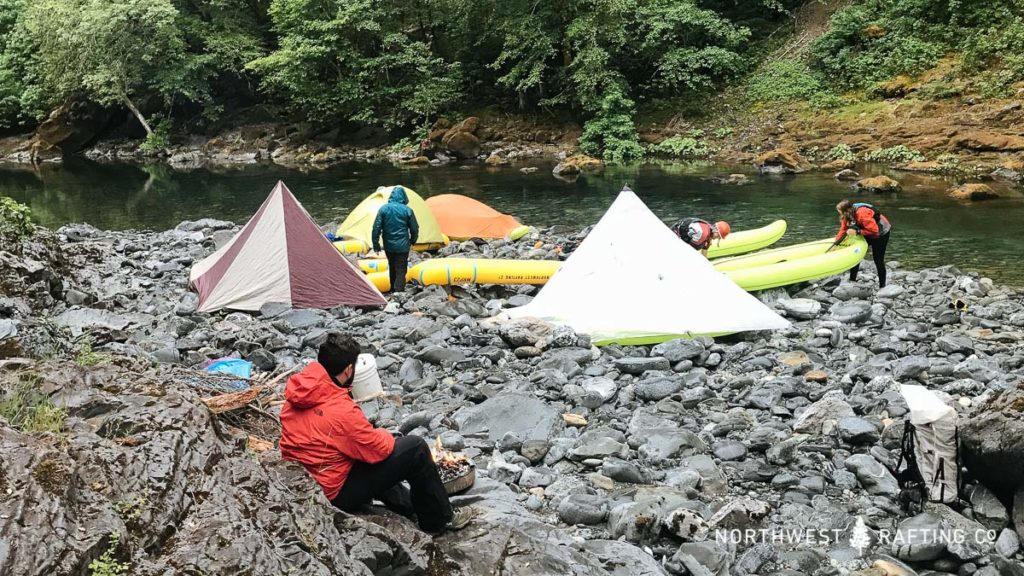 Camping at Chetco Bar on the Chetco River
Camping at Chetco Bar on the Chetco River
There is a good camp at Carter Creek and a couple of great established camps around Slide Creek. There really isn’t much camping between Slide Creek and Chetco Bar. After Chetco Bar there are a lot of great place to camp.
Wilderness Ethic
Please be respectful and follow the Leave No Trace Principles. On our commercial trips we pack out all human waste and ash. I encourage you to do the same.
River Difficulty
Most people rate the river at Class IV+ but there are a few rapids that require Class V skills between Slide Creek and Granite Creek. Be prepared to scout quite a bit and do some portaging. There are also a number of undercut rocks and sieves that demand respect. Remember that you are in a remote wilderness and that rescue would be difficult or impossible.
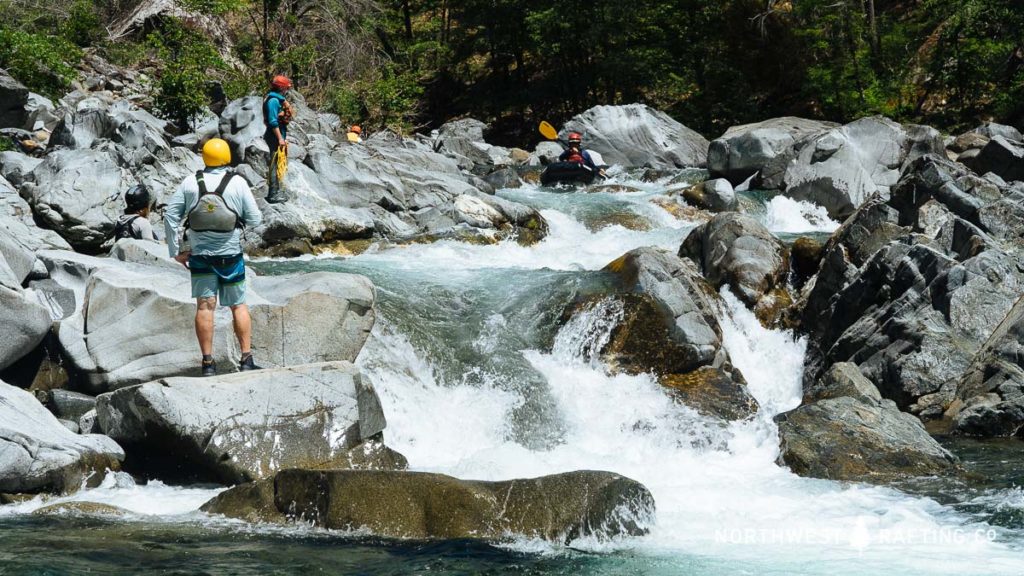 Wilson’s Way Rapid on the Chetco River
Wilson’s Way Rapid on the Chetco River
River Flows
River flows on the Chetco are measured on the river gauge at Brookings. This is a very rough gauge for flow in the upper sections. The flow generalizations below are based on late spring and summer trips. In the winter and early spring months there are more low elevation streams adding to the flow at Brookings meaning that there is less water in the main river.
At super low flows (<300 cfs) you can canyoneer and float down the canyon with durable inflatable kayaks or other inflatable contraptions.
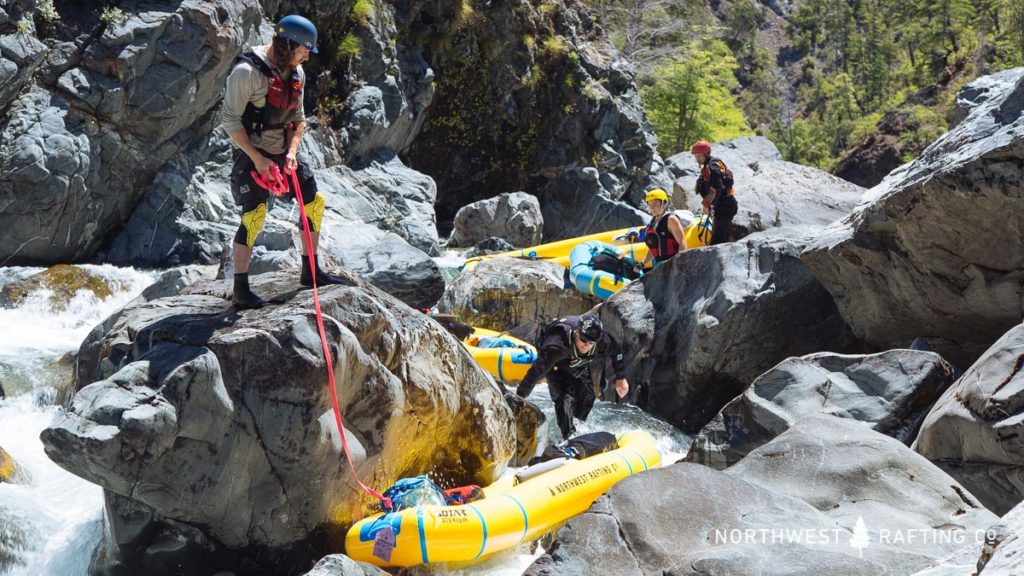 Portaging in the Upper Gorge of the Chetco River at around 300 cfs
Portaging in the Upper Gorge of the Chetco River at around 300 cfs
At lower flows (300 cfs to 900 cfs) the Chetco is best run in an inflatable kayak. The drops are steep and there are many potential pin spots for hardshell kayaks.
At medium flows (900 cfs – 1500 cfs) the rapids fill in nicely and hardshell kayaks would do well. There is not much eddy space between some rapids in the steep section below Slide Creek so solid boating is important.
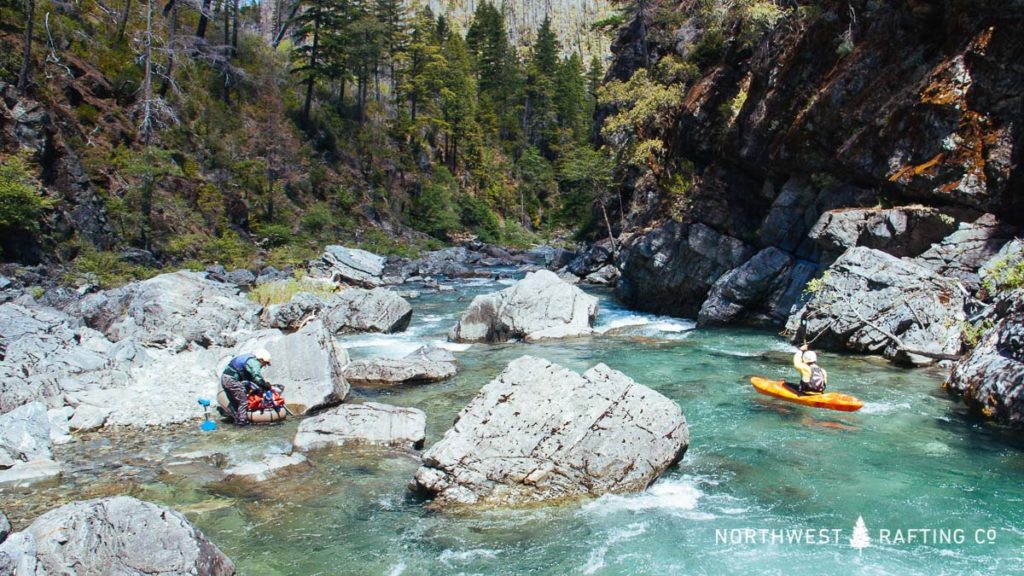 Rapids in the steep section between Slide Creek and Granite Creek
Rapids in the steep section between Slide Creek and Granite Creek
At higher flows (1500 cfs and higher) the river is particularly continuous and challenging for 2 miles between Slide Creek and Granite Creek. You’ll want to have solid Class IV+/V skills at these higher levels.
Further Reading
Please take the time to learn a little about the Kalmiopsis Wilderness. Here are a few links to get you started.
If you’re willing to put in the hard work to run the Chetco River you’ll be rewarded with a truly beautiful and remote river. Please don’t hesitate to add any comments below with more information or questions.